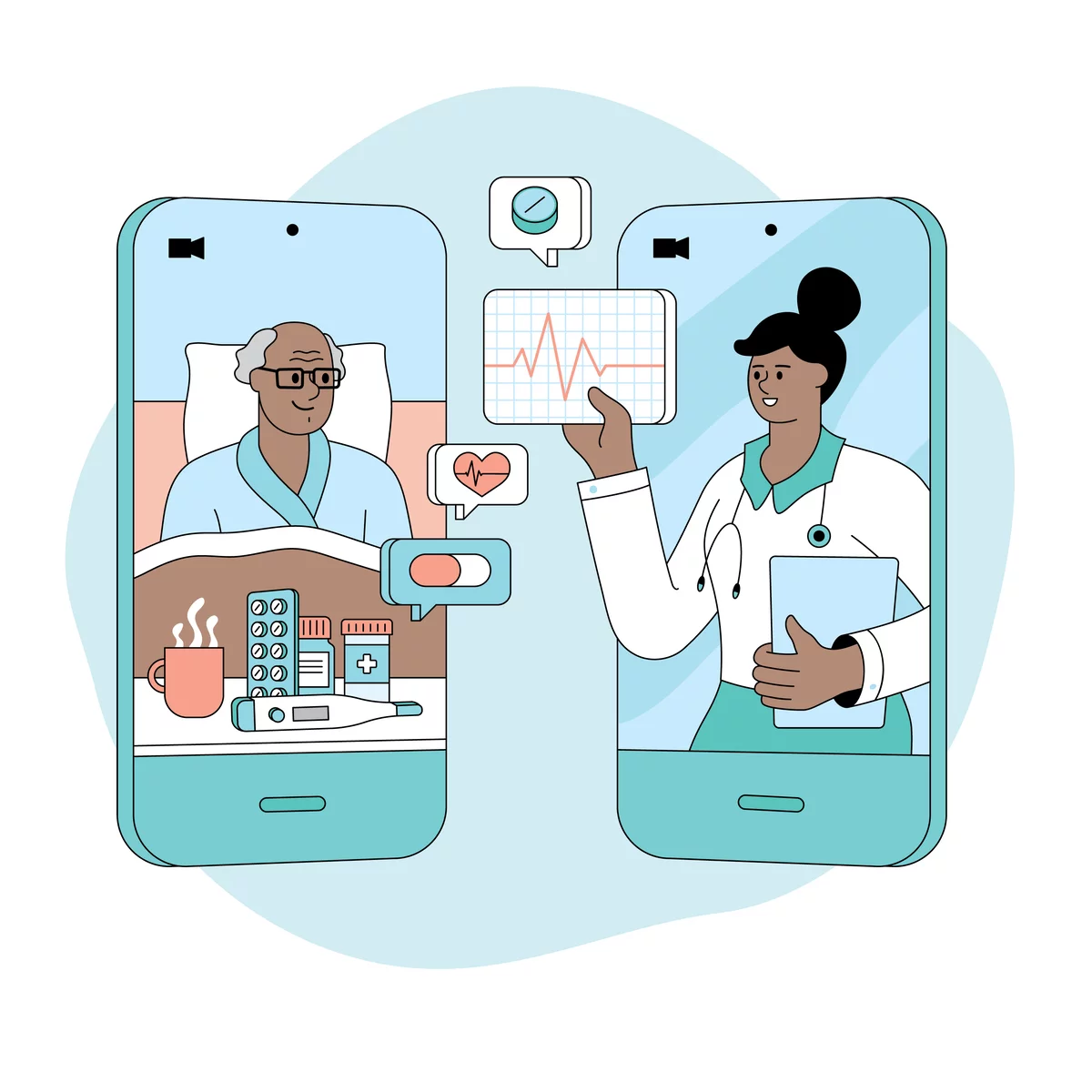What is Telehealth? Advantages & Evaluation.


Table of Contents
What is telehealth?
Telehealth delivers healthcare services remotely using telecommunications and digital technology like mobile devices and computers. Professional health-related education, long-distance clinical health care, health administration, and public health are the main focuses of telehealth. The hospital offers clinical and non-clinical services, whereas clinical services include diagnosis and treatment. However, non-clinical services also include training, education, and other services.
Technology has the capability to enhance the quality of healthcare and make it available to people. There is an increase in the use of it to manage health care. Thus, by getting more opportunities, telehealth makes modern healthcare more effective, synchronized, and comfortable to use.
Differences Between Telehealth and Telemed
It is critical to note that telehealth is essentially the transmission of data, voice, video, images, and information without healthcare professionals or educators. Video-conferencing is one of the most convenient ways of using telehealth, as it improves healthcare services for patients living in remote, rural, and regional areas due to its ease of use. A growing number of people prefer to visit a specialist via videoconferencing instead of traveling to the nearest major city to make an appointment.
What is telehealth used for?
online doctor consultation service It is a service provided with the help of electronic information and telecommunication technology, to support remote & rural areas’ health care systems. It provides online clinical services & specialist advice to rural patients.
What does telehealth consist of?
For telemedicine consultations (which are the most widespread and popular service), one of three formats is chosen. It can be a text message, audio or video chat, or a medical concierge service – a phone consultation. If the videoconference format is chosen, when the doctor and the patient can see and hear each other in real time, this also makes it possible to exchange graphic and text data. Moreover, for example, X-ray or laboratory test data can be shown to the doctor but also loaded into the system during a telemedicine consultation. This is especially convenient in rural areas, where there is no way to get an appointment with a specialist who specializes in a specific field.
Also, telemedicine can become indispensable in obtaining an inexpensive “second opinion” from the doctor on the diagnosis and previously selected methods of treatment.
For physicians, telemedicine opportunities also have many benefits. For example, saving time when filling out the initial information about the patient, the ability to monitor the patient’s health at a distance and, if necessary, adjust this treatment, and many others.
Telepsychiatry, one of the varieties of telemedicine, is already actively using its resources to help people, including psychiatric examinations, therapy (individual, group, and family), patient education, and monitoring of medication intake.
Distance learning of doctors is another area of telemedicine. Broadcasts of conferences, lectures, and seminars in real-time for doctors and health workers provide an opportunity to share unique experiences, knowledge, and skills, not only theory but also practice. Teachers of medical faculties can conduct training lessons for their students, connecting practitioners from various hospitals via video links to them.
Especially often telemedicine in education is practiced today when it comes to broadcasting complex and even unique surgical operations, during which you can ask questions in real-time and sort out difficult situational moments. Moreover, during the operation, doctors can exchange images of various medical equipment, and transmit information, for example, about the patient’s health – about his pressure, pulse rate, etc.
Telehealth improves healthcare quality in the following ways:
- To make health care available to people in rural or isolated communities
- Providing access to specialists in particular for medical treatment
- Offer guidance to self-manage our health
- Enhance coordination of care and communication among the patient and medical team
- Make services more available to people with limited time, transportation, or mobility.
As mobile devices and the internet are ruling our lives, more and more people are supporting telehealth technologies for providing convenience, enhanced care, and promoting sustainability. Services of telehealth include video conferences (telemedicine) and consultations for mental health sessions to text messaging about health.
Advantages of Telehealth
- helps bridge the gap between Specialist Scarcity/ Primary Care Physician Shortages.
- helps Patient Engagement
- helps with Education and Training
- Provides Communication
How do you evaluate the effectiveness of ?
Telehealth is a system that provides health-related information and administration through electronic transmission. As is the case with any interaction or transaction, it is essential to assess the sufficiency of advanced solutions for the delivery of medical services consistently. This is the case with any interaction of any kind. Visits can be evaluated by medical professionals on the basis of the administration client’s satisfaction, their experience, the quality of specialized services provided, their convenience, their impact on communication, and their viability.




One Comment